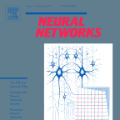Heterogeneous tabular data are the most commonly used form of data and are essential for numerous critical and computationally demanding applications. On homogeneous data sets, deep neural networks have repeatedly shown excellent performance and have therefore been widely adopted. However, their application to modeling tabular data (inference or generation) remains highly challenging. This work provides an overview of state of the art deep learning methods for tabular data. We start by categorizing them into three groups: data transformations, specialized architectures, and regularization models. We then provide a comprehensive overview of the main approaches in each group. A discussion of deep learning approaches for generating tabular data is complemented by strategies for explaining deep models on tabular data. Our primary contribution is to address the main research streams and existing methodologies in this area, while highlighting relevant challenges and open research questions. We also provide an empirical comparison of traditional machine learning methods with deep learning approaches on real tabular data sets of different sizes and with different learning objectives. Our results indicate that algorithms based on gradient-boosted tree ensembles still outperform the deep learning models. To the best of our knowledge, this is the first in-depth look at deep learning approaches for tabular data. This work can serve as a valuable starting point and guide for researchers and practitioners interested in deep learning with tabular data.
翻译:不同形式的表层数据是最常用的数据形式,对于许多关键和计算要求很高的应用至关重要。在同质数据集方面,深神经网络一再显示优异的性能,因此被广泛采用。然而,它们用于模拟表层数据(推论或生成)仍然极具挑战性。这项工作为表格数据提供了最先进的深层次学习方法概览。我们首先将数据分类为三组:数据转换、专门架构和正规化模式。然后,我们全面概述每个组的主要方法。关于生成表层数据的深层学习方法的讨论,辅之以解释表格数据深层模型的战略。我们的主要贡献是处理该领域的主要研究流和现有方法,同时突出相关的挑战和公开研究问题。我们还对传统机器学习方法与不同尺寸和不同学习目标的真实表层数据集的深层学习方法进行了实证比较。我们的结果显示,基于梯度加速的树团的算法仍然优于深层学习模型。我们最了解的情况是,这是对深层研究者进行深层研究的初衷指南。





